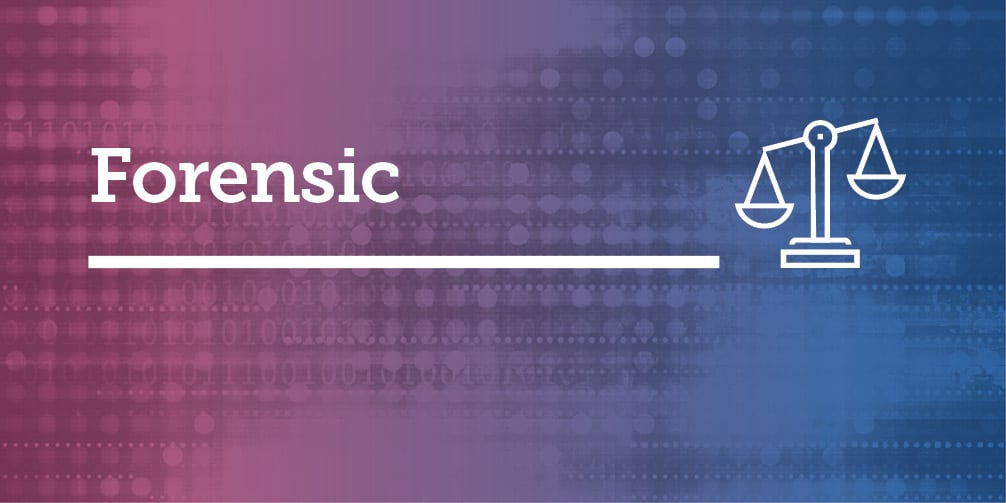Featured Article
Article Title
Don’t Know Responding in Young Maltreated Children: The Effects of Wh- Questions Type and Enhanced Interview Instructions
Authors
- Kelly McWilliams- Department of Psychology, John Jay College of Criminal Justice and the Graduate Center, City University of New York
- Shanna Williams- Department of Educational and Counseling Psychology, McGill University
- Stacia N. Stolzenberg- School of Criminology and Criminal Justice, Arizona State University
- Angela D. Evans- Psychology Department, Brock University
- Thomas D. Lyon- Gould School of Law, University of Southern California
Abstract
Objective: Two studies examined 4–7-year-old maltreated children’s “I don’t know” (IDK) responses to wh- questions after receiving various interview instructions. Hypotheses: We predicted (H1) children would be less inclined to give IDK responses and more inclined to guess to color/number questions compared to other wh- questions; (H2) IDK instructions would increase children’s IDK responding compared to no instructions, with an increase in accuracy; but (H3) instructions would be less effective in reducing guessing for color/number questions than other wh- questions. In Study 1, we predicted that (H4) verbalizing a commitment to answer IDK would be particularly effective. In Study 2, we predicted that (H5) IDK instructions would reduce children’s accurate corrective responses, but that (H6) the negative effect of IDK instructions on corrective responses would be alleviated by a “correct the interviewer” instruction. Method: Across 2 studies, 301 four- to seven-year-old (M = 5.60, SD = 1.09) maltreated children viewed videos and answered wh- questions about true and false details. Both studies included a within-subjects manipulation of wh- types (color/number & wh- detail) and a between-subjects manipulation of instructions (Study 1: IDK practice, IDK practice/verbalize, control; Study 2: IDK, correct me, IDK þ correct me, control). Results: In both studies, (a) color/number questions elicited more guessing than wh- detail questions, (b) IDK instructions decreased inaccurate responses, but they also decreased accurate responses, including accurate corrective responses, and (c) IDK instructions had a larger effect on wh- detail questions, reducing accurate corrective responses. In Study 1, verbalization failed to enhance the effect of instructions. In Study 2, the negative effect of IDK instructions on accurate corrective responses was not alleviated by instructions to correct the interviewer. Conclusions: Among young maltreated children, color/number questions elicit higher rates of guessing than other wh-questions. IDK instructions reduced inaccurate responses, but also reduced accurate responses.
Keywords
child maltreatment, forensic interviewing, ground rules, child memory, interview instructions
Summary of Research
“Young children’s excessive tendency to guess when asked questions, and their concomitant failure to give “I don’t know” (IDK) responses, is a well-documented phenomenon. Guessing is an obvious problem for forensic interviews, because it is likely to increase inaccuracies and inconsistencies in children’s reports. In response, practice guidelines commonly recommend that forensic interviewers questioning children about abuse include an instruction on the appropriateness of answering IDK… A number of studies have found that children are less likely to answer IDK to yes–no and forced-choice questions than wh- questions, both in laboratory studies) and in observational research… In part, children’s disinclination to provide IDK responses to yes–no and forced-choice questions is attributable to the fact that yes–no and forced-choice questions are recognition questions, and thus more sensitive to memory than wh- questions, which are recall questions… If a response is unavailable, the youngest children will acknowledge their ignorance, but if they are capable of generating any response, even if based on nothing more than pure speculation, they will claim to know… Children as young as 15 months of age exhibit an awareness of the need to provide yes or no responses to yes–no questions and will do so despite their ignorance” (p. 125).
“Although practice guidelines commonly recommend that interviewers instruct children on the acceptability of IDK responses, research support for instructions is somewhat limited…
…First, it may be necessary to utilize practice and reminders to make IDK instructions clear, sufficiently encourage children to provide IDK answers, and increase the likelihood that children retain and use the instruction throughout the interview…
…Second, IDK instructions may be less effective with younger children, who, as noted earlier, may not know when they know the answer to a question, and, because of their immature executive functioning skills, may have more difficulty keeping the instruction in mind and in using it in formulating their responses…
…A third potential problem with IDK instructions is that they may encourage children to be excessively cautious in responding, or to respond “IDK” without thinking… Excessive use of the IDK response can also reduce true negatives: children may fail to deny when they should deny and fail to correct false details presupposed by questions…Two studies have found that when researchers asked young children (3- to 7-year-olds) to verbalize a commitment (a promise not to cheat), compared to simply affirming a request, the children were more likely to adhere to the rule…
…In Study 1, we examined the effects of different kinds of IDK instructions. We predicted that instructions with practice would increase children’s IDK responding, compared to no instructions (H2). We anticipated, however, that the conditions with instructions would be less effective in reducing children’s tendency to answer color/number questions than wh- detail questions (H3). We also included an instructions condition in which children verbalized their commitment to provide IDK responses and anticipated that this would enhance the effect of instructions (H4)...
…Study 2 followed up on the findings of Study 1. First, we again compared wh- color/number questions to wh- detail questions, this time more closely matching content across question types. Second, we tested a hypothesis derived from unexpected results of Study 1, which was that IDK instructions would lead children to give simpler IDK responses and fewer accurate corrective responses, in which they accurately corrected erroneous presuppositions (H5). Third, we added an instruction condition in which we combined IDK instructions with “correct the interviewer” instructions to determine if this would ensure children would distinguish between IDK responses and accurate corrective responses. We predicted that “correct the interviewer” instructions would reduce children’s tendency to give simple IDK answers rather than accurate corrective answers (H6)” (p. 126-127).
“With respect to false details, children gave more inaccurate responses to color/number questions, consistent with guessing, though this was due to a reduced tendency to give corrective responses rather than simple IDK responses. With respect to true details, children were less likely to give IDK responses to color/number questions, but this didn’t lead to higher rates of inaccuracy, because their answers to color/number questions were more accurate… We had predicted that instructions would affect wh-detail questions more than color/number questions, but we did not anticipate that those effects would be negative. Furthermore, children in the verbalization instruction condition performed similarly to children in the instruction condition without a verbalization component” (p. 130).
“In both studies there was evidence that children guessed more often in response to color/number questions than in response to wh- detail questions, though this manifested itself in different ways…In Study 1, we found that color/number questions about false details led to increased error. Children were less likely to give true corrective responses in which they denied that the details appeared in the videos. In Study 2, we matched color/number and wh- detail questions for content and found that in response to questions about false details, children were less likely to respond IDK to color/ number questions than wh- detail questions. In the absence of IDK instructions, children provided more inaccurate responses to color/ number questions than to wh- detail questions, likely driven by fewer IDK answers” (p. 134).
Translating Research into Practice
Recall Over Recognition:
“Researchers advise interviewers to minimize their use of recognition questions and to increase their use of recall questions to reduce guessing and error, but if young children exhibit high rates of guessing in response to some types of recall questions—namely those regarding color and number—this would counsel against their use as well and suggest that interviewers use caution when interpreting children’s answers to such questions” (p. 125).
Action Over Description:
“There is evidence that children provide more productive responses when asked wh- questions about actions than when asked for descriptions, and that children remember actions better than descriptions… Even when questions about actions appear to presuppose information (e.g., “What did he do?” and “What did you do?” presuppose that the actors did something), the availability of a “nothing” response may lower rates of guessing and thus lower the risks…
…In practical terms, actions are often the most important type of detail in investigations of physical and sexual abuse against young children, because of the frequency with which they involve familiar suspects and familiar locations. Hence, interviewers may be able to avoid extensive questioning about descriptions. When color and number information is essential, it may be possible for interviewers to elicit color and number information through exhaustive use of broader questions, including invitations that call for free recall (e.g., “Tell me everything that happened the last time [abuse occurred]”) or cued recall (e.g., “You said [child generated detail]; tell me more about that”). Furthermore, other types of recall questions may also prove more productive and less susceptible to guessing, such as “Tell me how everything looked” or “Tell me everything you saw” (p. 134).
Open-Ended Over Color/Number:
"Researchers routinely warn forensic interviewers that recognition (yes–no and forced-choice) questions are risky, in part because children only very infrequently give IDK answers to such questions. These results show that some wh- questions, despite tapping recall memory, share similar risks, and that children are particularly likely to guess when asked questions about color and number. Interviewers should be mindful of these risks and attempt to elicit color and number information through more open-ended questions” (p. 136).
Other Interesting Tidbits for Researchers and Clinicians
“The results highlight the dangers in encouraging IDK responses. If children are emboldened to answer “IDK” but are not able (or inclined) to monitor their certainty closely, they may answer indiscriminately, and both accurate and inaccurate responses will be reduced” (p. 134).
“When children demonstrate undue eagerness to guess in response to instruction practice questions, this may provide a useful warning to the interviewer (and others who observe the interview) regarding the interviewer’s use of questions with high response availability. Instructions thus serve many purposes, and researchers should consider their rapport-building and diagnostic qualities in addition to further exploring their effects on children’s acknowledgment of ignorance” (p. 136).
Additional Resources/Programs
As always, please join the discussion below if you have thoughts or comments to add!
- Was it something else, buddy? A “something else” alternative does not increase accuracy of answers in forensic interviews with children
- The effects of familiarity and support on children’s disclosure of transgressions
- A National Survey of Child Forensic Interviewers: Implications for Research, Practice, and Law































.jpg?width=1006&height=503&name=Program_Digital-Mental-Health_Main_Image%20(1).jpg)


